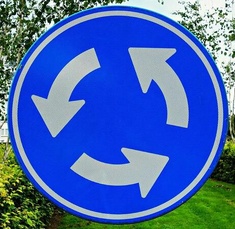
Roundabouts
First published: Saturday August 27th, 2022
Report this blog
Introduction
I was recently reading some of the comments on a Facebook group specifically aimed at truck drivers. The conversation was about roundabouts (or traffic circles, rotaries, or whatever they are called in your country.) and their use. The comments ranged from "Best thing since sliced bread" to "The spawn of Satan himself" and everything in between !
This got me thinking, so I did a little research. It seems the humble roundabout (I shall call it this, because thats what they are mainly called in the UK) has quite a long history and many variations, so I decided I would write a blog about it. They are in most countries worldwide, I think the only ones without are some of the smaller island nations, although I'm not completely sure about that. (Let me know if you know different.)
Hopefully, I won't bore you too much and you wander off to tend to your roses or something.
So, anyway. The humble roundabout, where did it start ?
History
Originally known as a "circular junction", they actually precede the motor car by over 100 years. the first of these junctions was built for architectural and aesthetic reasons rather than traffic flow.It was built in Bath, England in 1768 and known as "The Circus".
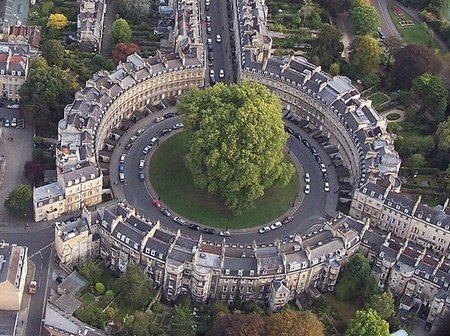
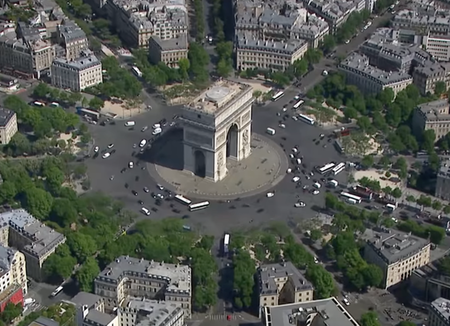
France followed suit in 1780 when the Place de l'Etoile ("Place of the Star" in English, refering to the shape of the avenues radiating away from the central area) was constructed around the Arc de Triomphe at the end of the Champs Elysee. The first in the USA was in a design for Washington DC, but more famous is Monument Circle in Indianapolis, built in 1821, which gave the city it's nickname of "Circle City"
With the invention of the motor car, many traffic circles were built, however they weren't very helpful in reducing accidents. There were no signs indicating right of way, and vehicles were entering at high speed with no regard for other road users. As such the design of traffic circles declined and many were removed up until the 1950's with local authorities citing high casualty rates compared to traffic lights and regular junctions.
However in the 1960's engineers employed at the UK's Transport Research Laboratory decided to redesign and standardise circular junctions. Part of this process involved traffic flow research, giving vehicles on the actual roundabout priority over vehicles entering the roundabout.

This design became compulsory across the United Kingdom from 1966. Most of the British influenced countries soon followed suit, Australia being the first outside the UK to build what has become known as the "Modern Roundabaout". The rest of the world has been adopting the same rules since, although some were a little slower than others. Canada and the US only adopted this system in the 1990's for example.
Operation and Safety
The way roundabouts work is designed to reduce journey times by slowing traffic flow. This statement be appear contradictory, however traffic flows at a more constant rate rather than coming to a complete stop as it would at traffic lights for example. Whereas a red light would still be working regardless of the amount of vehicles on the road, so at quieter times one vehicle may not have to stop at all on a roundabaout.
Modern research has suggested that roundabouts reduce accident fatalities by up to 90% compared to all-way stop junctions where traffic has to stop and cross carraigeways. Emissions from vehicles are also considerably reduced by as much as 45% in the case of Carbon Monoxide and Nitrous Oxide. They also reduce fuel consumption by a considerable amount.

Being a pedestrian is also known to be safer at the edges to a roundabout due to the slower speeds of vehicles and the ability to cross the road between either stopped vehicles waiting to enter the roundabout, or when there is little traffic.
Some larger, busier roundabouts have pedestrian bridges or underpasses to further segregate walkers from traffic.
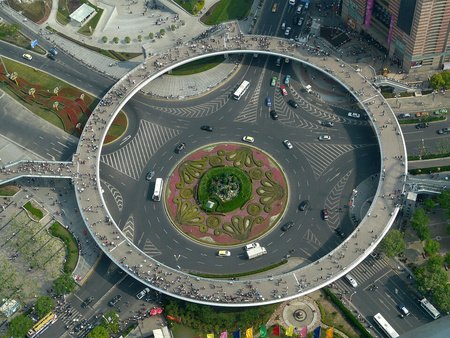
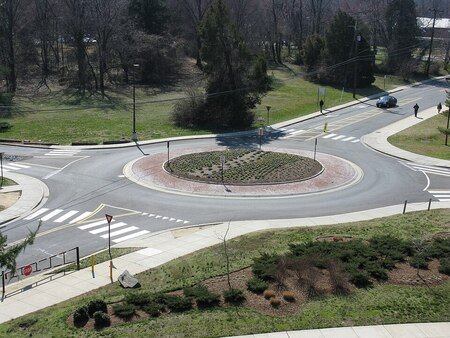
Mini Roundabouts
On smaller intersections, often minor roads within residential areas, space may be limited. In this case, so called (in the UK at least) mini-roundabouts are used.
These usually consist of marking painted on the road surface. However the general rule of giving way to traffic already on the roundabout still applies. If circumstances are such that your vehicle cannot encircle the painted zone, then you may drive over it providing you follow the give way rules.
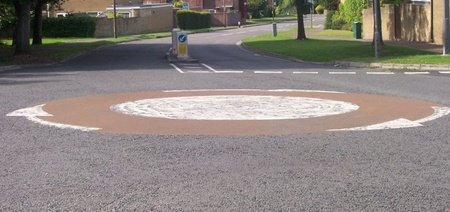
The Centre Section
The middle piece of land on the roundabout itself is often "dead" land. What I mean by "dead" is that it can rarely be used for anything. Although I do know of a couple of examples where there are buildings within the centre section, although this is rare and usually where a number of roads have been made one-way around the building that was there previously.
Many cities or towns use the centres to promote their municipality or region by adding art works or memorials to this small piece of real estate. Some are much more elaborate than others and occasionaly can be distracting to drivers. Below are a few examples....
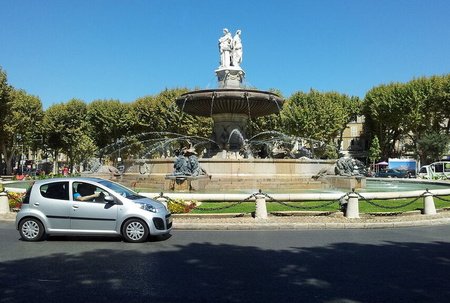

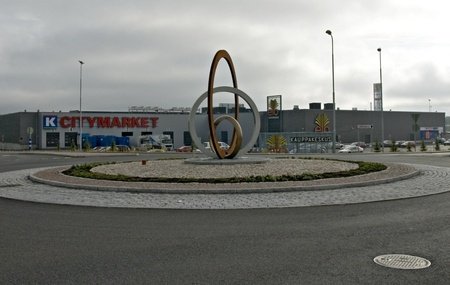
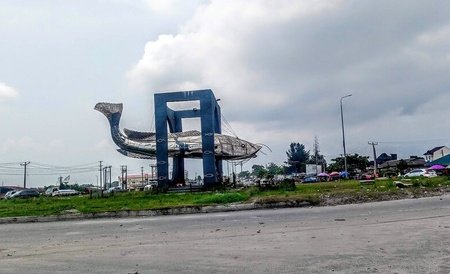
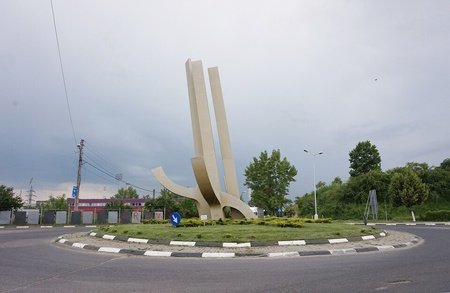
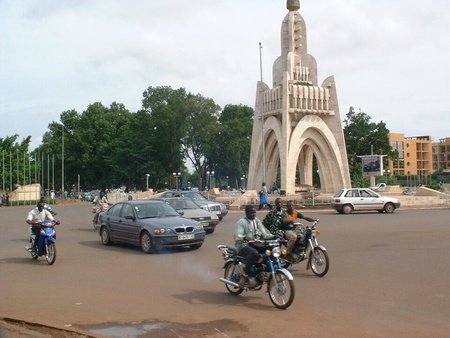
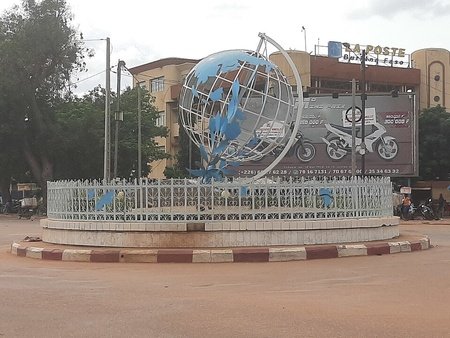

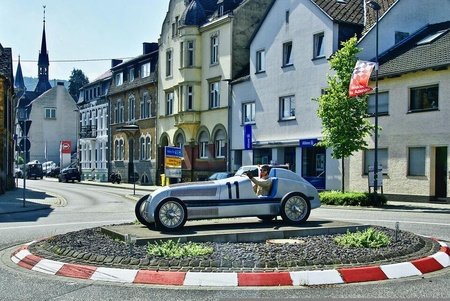
Other Unusual Roundabouts
Occasionally roundabouts are put in strange places. There is even one in a tunnel in Norway.
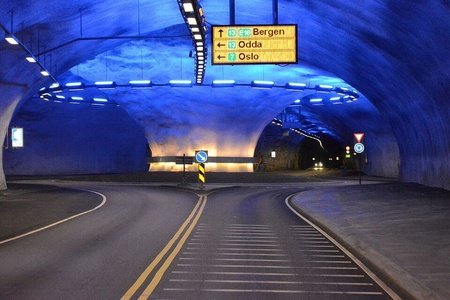
There is a roundabout on a canal in Birmingham, UK
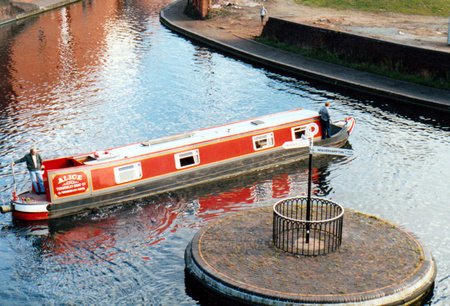
And it would be remiss of me not to mention the UK's most notorious roundabout in Swindon, Wiltshire. Nicknamed by locals as the "Magic Roundabout" so much that even the local authority has decided to place the name on it's approach signs. It consists of five mini roundabouts surrounding a central island that at Christmastime has a tree in the centre. The system works suprisingly well despite it's complexity.

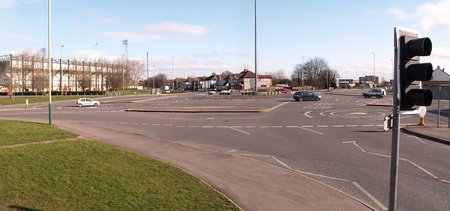
Summary
Like them or loath them, roundabouts are here to stay. Well, whilst we all still have road based transportation anyway. Maybe in the future when all vehicles drive themselves there will be no need for roundabouts, or traffic lights for that matter. All vehicles will know where every other road user is and manoeuver accordingly. But until then, we are all going to have to use a roundabout at some time during our journey.
For me as a professional driver (meaning I get paid to do it!), roundabouts are just another part of the road structure. Some make life easier, however poorly designed examples make driving more difficult. You just have to, literally, go with the flow.
There are many more examples around the world of roundabout art that I know of, however restrictions on picture use and copyright rules mean I can't post them here. (This is not a complaint by the way, just an observation) You will probably know of some yourselves, dear reader. They are, after all, everywhere.
I'll leave you with a photo I took myself while out on the road...
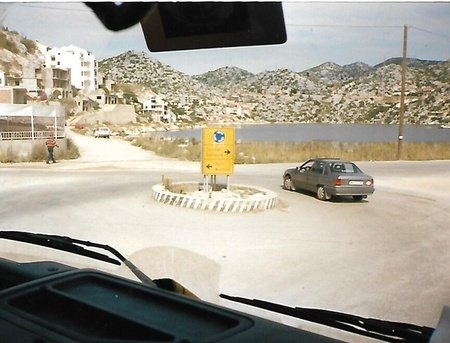
Not my best photo, and definately not the best roundabout, however it has memories as it points towards Sarajevo, a place I was apprehensive about visiting as it was during the Balkan Conflict in the 1990's. In the end, the journey passed without incident, thankfully.
Anyway, thanks for reading, and stay safe especially on roundabouts.

Oh and thanks for the reply and compliment, much appreciated.
thought you was gone on bloggingAfter all, it is said that 50% of world's roundabouts are located in France. This estimate is impossible to verify but all you have to do is take your car and drive a little to see that the roundabouts swarm across the country since 20 years, especially in peri-urban areas.
These structures have become so important in France, that they were chosen as places of traffic blockages during very many demonstrations of the Yellow Vests in 2018-2019. And I can tell you that blocking a roundabout here is synonymous with major traffic complications!
Fun-fact: we have in France, several rankings of the ugliest roundabouts, because many works of art (often awful) are found on these types of intersections. Collectives of citizens have even been created to protest against these costly creations for the taxpayer and which most often disfigure the landscape.
Have you a link to something about the worst roundabouts?
Love to have a look at those!
Les 20 pires rond-point de France and
Coûteux, moches... voici les 10 pires ronds-points de France